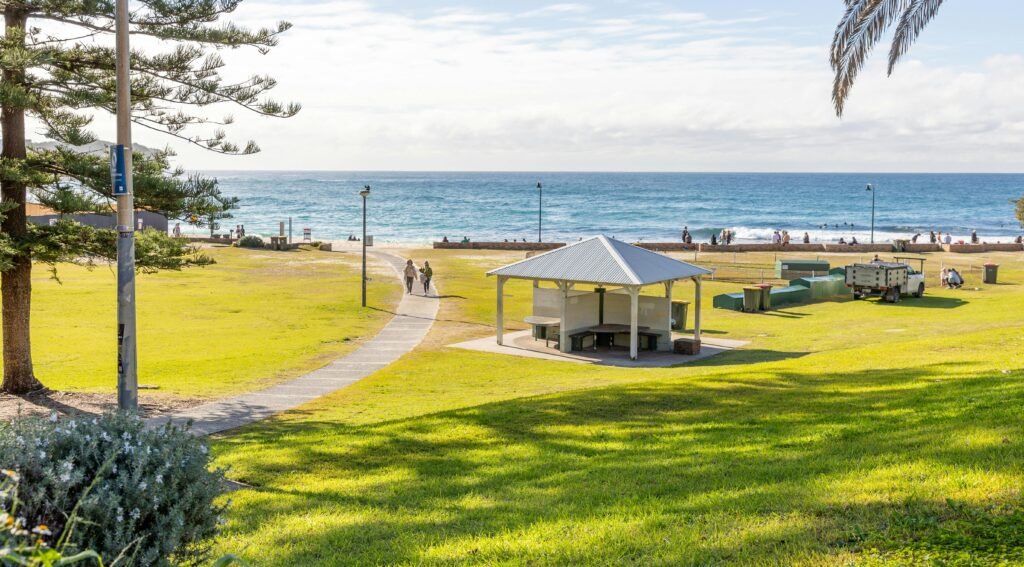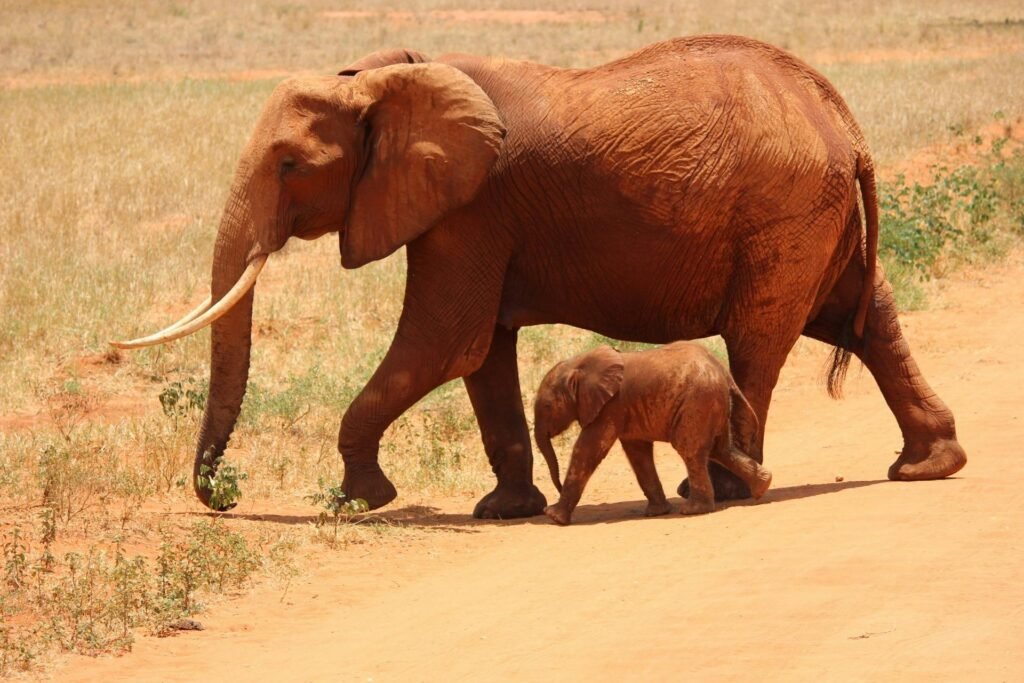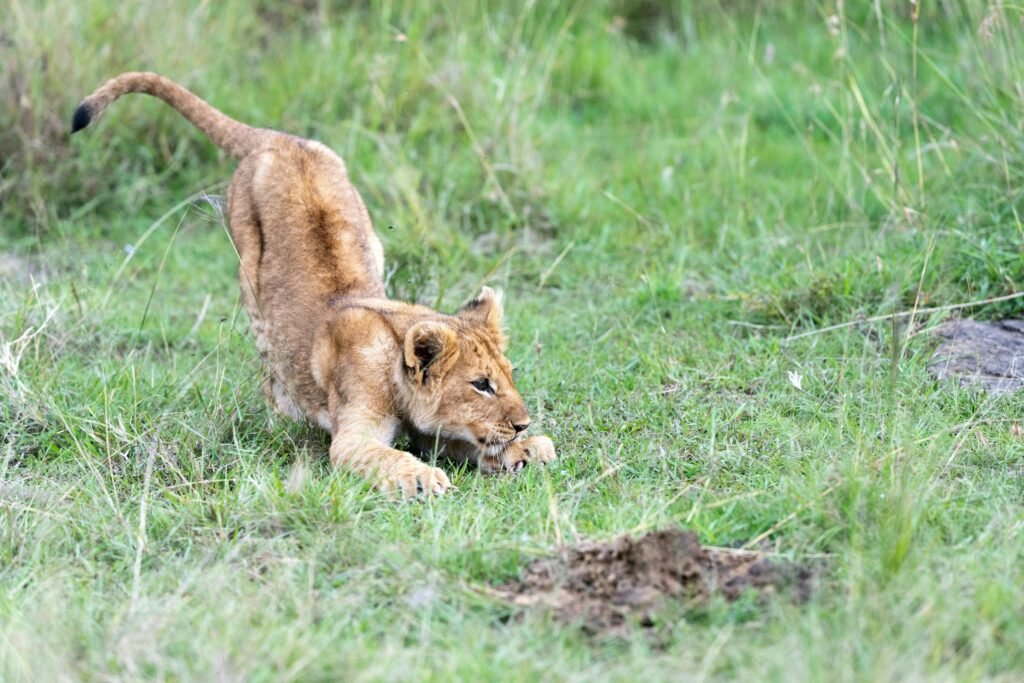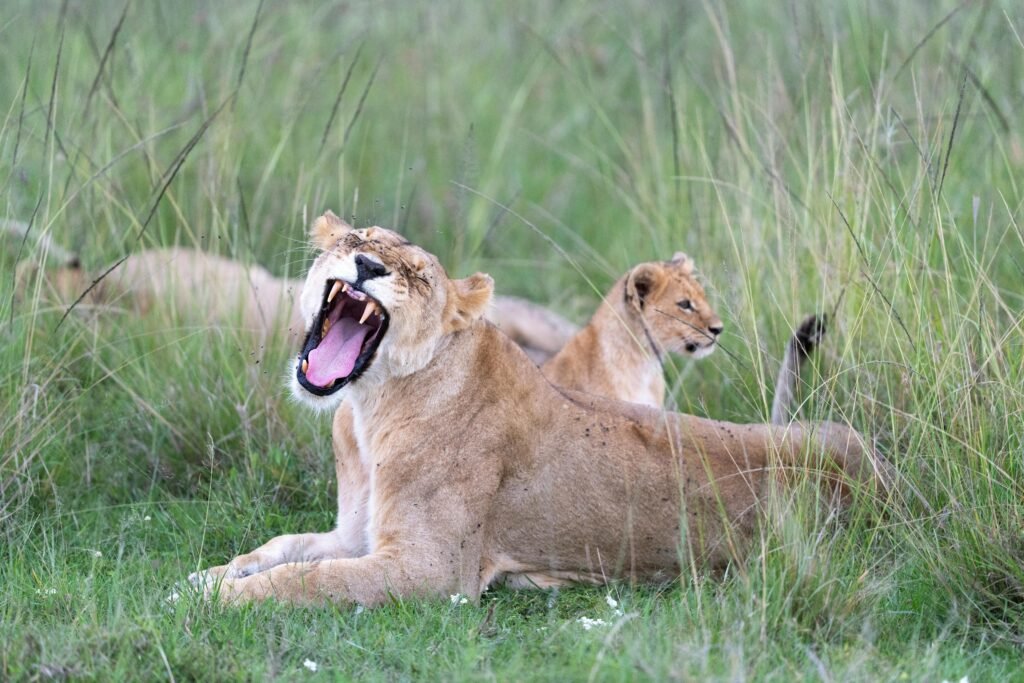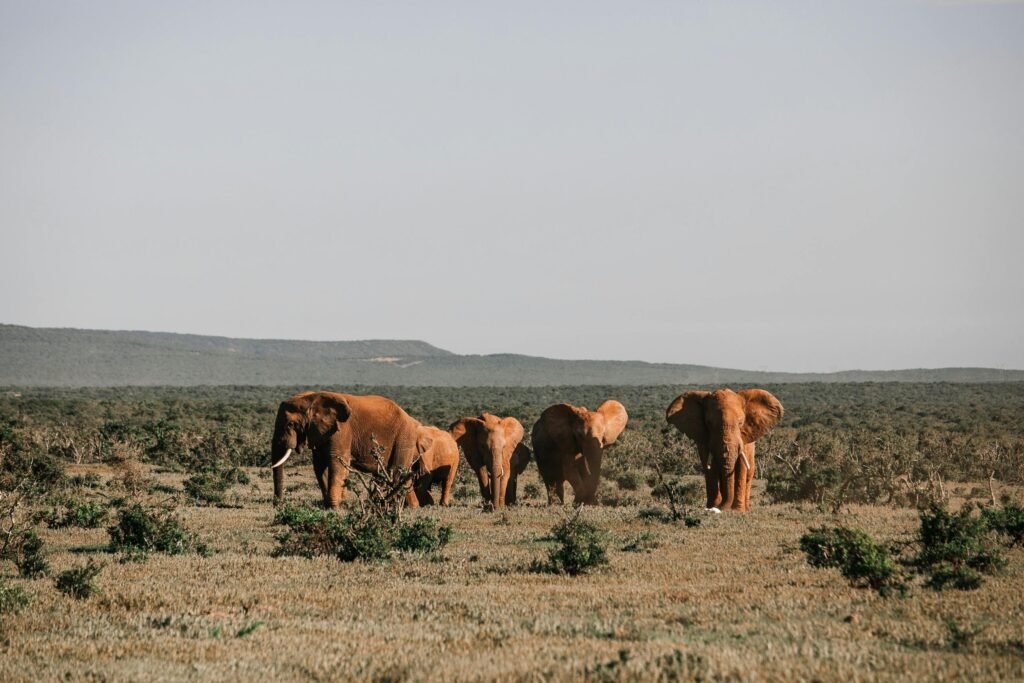This 11-day safari and beach itinerary offers the perfect combination of adventure, nature, and coastal relaxation in Kenya. Starting with arrival in Mombasa, the journey begins with a guided hike and wildlife experience at Nguuni Nature Sanctuary, including giraffe watching and a sundowner with a bonfire. The adventure continues with visits to Taita Hills Wildlife Sanctuary and the LUMO Conservancy, followed by two days of immersive game drives in Tsavo East National Park. From there, the journey transitions to relaxation as travelers drive south to Kenya’s stunning coastline. The next several days are spent enjoying the pristine sands of Diani Beach and the serene beauty of Chale Island, including a traditional ngalawa boat ride and sandbank excursion. This itinerary perfectly balances safari thrills with coastal tranquility, concluding with a departure from Mombasa (flight not included).
11 DAYS KENYA: TSAVO AND BEACH
11 DAYS KENYA: TSAVO AND BEACH
Highlights
- It’s an 11 Days 10 Nights Kenya Bush & Beach Safari starting and ending in Mombasa.
- Destinations: Nguuni Nature Sanctuary, Taita Hills, LUMO Conservancy, Tsavo East, Diani Beach & Chale Island.
- Activities include: Guided hike, giraffe watching, sundowner bonfire, wildlife safaris, sandbank visit, and beach relaxation.
- Best Time to Visit: All year round for both safari lovers and beach enthusiasts.
- Type of Transport: Road safari in a 4×4 Land Cruiser.
- Tour Type: Private and customizable.
Itinerary
This 11-day Kenya safari and beach itinerary offers an enriching blend of wildlife exploration and coastal relaxation. The journey begins in Mombasa, with a guided nature experience at Nguuni Sanctuary, where guests enjoy hiking, giraffe watching, and a bonfire sundowner. It continues to Taita Hills Wildlife Sanctuary and the LUMO Conservancy, followed by two days in the expansive Tsavo East National Park, known for its dramatic landscapes and rich wildlife. From there, the itinerary shifts gears with a scenic drive to Kenya’s stunning south coast for a rejuvenating beach escape. The remaining days are spent in Diani Beach and Chale Island, combining beach leisure with optional activities like a traditional ngalawa boat ride and sandbank visits. This tour offers the perfect balance of adventure and relaxation, ideal for travelers seeking both safari thrills and coastal serenity.
Tour Plan
Upon arrival at Moi International Airport, you'll be met by our representative and transferred to your beach hotel. Spend the rest of the day unwinding after your journey — enjoy the ocean breeze, a stroll along the beach, or a cocktail by the pool.
Today is all about nature and unique coastal wildlife experiences. You’ll head to Nguuni Nature Sanctuary for a guided nature walk where you can spot giraffes and other plains game up close. As the sun begins to set, enjoy a scenic sundowner with a bonfire in the bush, creating a magical and serene evening.
After breakfast, depart for the scenic Taita Hills. You'll check in at a lodge overlooking a busy waterhole and head out for a game drive in the adjacent LUMO Conservancy — home to elephants, lions, giraffes, and other wildlife. Night game drives are also optional here.
Enter Tsavo East National Park, known for its “red elephants” and rugged wilderness. You'll enjoy a full day of game drives, exploring its dusty plains and watching wildlife gather near waterholes. Look out for lions, cheetahs, zebras, and possibly the elusive leopard.
Enjoy morning and afternoon game drives as you explore a different region of the park. Visit the Aruba Dam or the Lugard Falls, and soak in the raw African wilderness that defines Tsavo.
Say goodbye to the savannah as you drive down to Kenya’s stunning south coast. Arrive in Diani Beach in the afternoon and check in to your beachfront resort or hotel. The rest of the day is for relaxing by the Indian Ocean.
Spend your day enjoying the soft white sands of Diani and take a short trip to the secluded Chale Island. This peaceful island paradise offers snorkeling, spa treatments, or simply pure relaxation in a magical setting.
A full day to enjoy beach activities, indulge in delicious coastal cuisine, take part in optional excursions like diving or jet skiing, or simply unwind at your leisure.
Take a traditional ngalawa (dugout canoe) to a nearby sandbank for a private beach moment surrounded by crystal-clear waters. Enjoy snorkeling or sunbathing on the pristine sand before heading back to Chale Island for more relaxation.
Spend your last full day soaking in the serenity of Diani and Chale. Optional spa treatments, sunset walks, or a candlelit dinner can make this farewell to the coast truly special.
After breakfast, you'll be transferred to Moi International Airport in Mombasa for your international departure. We hope you leave with unforgettable memories of your East African adventure.
Questions & Answers
You are advised to get a travel insurance before embarking on safari to cover for lost property and medical and emergency. The insurance is available locally at an added cost. Please enquire for more details on how you can get the cover. If you have purchased your cover and in the event of an emergency or sudden sickness while you’re on safari in East Africa, we guarantee medical evacuation to a hospital. The medical facilities in Nairobi offer a full staff of professionals along with state-of-the-art testing equipment. Your cover will pay for the Flying Doctors Service to come to your side. Most hotels and safari lodges you will visit has in-house doctor who will attend to you in case of a need.
Normal, comfortable fitting, neutral coloured clothes like khaki and cotton travel well, and pale earth colors such as brown, tan or olive are best for viewing wildlife and birds. Camouflage clothes are illegal in many African countries. Solid-colored safari clothes, however, are practical and widely available; Comfortable, closed walking shoes such as topsiders or running/tennis shoes with socks, are recommended over sandals; thorns are everywhere, and socks with your shoes deter mosquito bites. Also, opt for pants or leggings to avoid insect bites. Include a lightweight raincoat or jacket, and a swimsuit (many lodges have pools.) Safari hat would be convenient to avoid sunburn as well. A nice dress is useful for hotels, clubs, casinos and restaurants in Nairobi, where men need to wear a jacket and tie. The 5star Safari game lodges will not seat dinner guests wearing vests, shorts, swim wear. As for beach hotels they do enforce a dress code of “Smart Casual.” Safari/Bermuda shorts are unwelcome at most dining rooms; visitors should dress conservatively in Islamic communities (Lamu, Mombasa, Zanzibar;) long sleeves and long pants also deter mosquitoes and sunburn. Laundry service is available at most lodges and even tented camps, but be very clear about when you need your clothes returned. Take at least three changes of clothes for a week on safari, plus your own detergent to wash a few things. Dry cleaners are rarer than rhinos. The best advice is to travel light, and wear cotton.
Tips to driver/guides, tour managers and guides are own discretion, but customary they are highly appreciated for a job well done. For your Tour guide/driver $10.00 per tourist per day is the recommended amount for most safaris. At lodges and camps, the recommended tips are $10.00 per tourist per day to be shared among camp personnel.
Since you will be met upon arrival at the airport and escorted to your hotel, you will not need any local currency before you reach the hotel, where you can obtain it. However, if time permits, airport exchanges often give better rates than hotels. There is now a large number of registered For-Ex Bureaus where you can change your money safely and at excellent rates. Major Credit Cards are often accepted in larger towns and at lodges, but in markets and with vendors along the road, cash works best, and bargaining is expected. We recommend that you take traveler’s checks rather than carrying large amounts of cash. Many travelers find it useful to carry a hand calculator to estimate dollar values while shopping. ATM machines are not widespread and may only be found in major capitals; consult your own bank before departure. In Kenya, the local currency is Kenyan Shillings
Aside from shopping, you need money for drinks, tips and incidentals. Experience has shown that most clients spend between $500 and $1000. The shops are full of tempting items. Major credit cards and travelers checks are accepted in major hotels and stores, but some game lodges and rural shops accept only cash. We also recommend that you take traveler’s checks rather than cash with you. Do not keep all valuables in one place, such as a purse, that could be lost. It’s a good idea, if you have more than one credit card to keep the second in a separate pocket or locked in the hotel safe. Your airline ticket will be collected by our office upon arrival in Nairobi for reconfirmation of your return flights.
No, not if you stay within the marked boundaries of your lodge or in your safari vehicle. Your guide and driver know what is, and is not, safe. Incidents involving animals are rare in East Africa and are, almost without fail, the result of someone doing what they have been advised not to do. Avoid wearing flashy jewelry and bringing too much cash, and always hold onto your purse and camera bag. Beware of clever conmen, some of them pose as police officers, and don’t walk in the city at night nor alone in an empty beach. Also, do not wear money belts, since they can easily be cut off from the rear. It is always a good idea when you travel to keep a photocopy of your passport in your luggage and another at home. It’s a fact that traveling on safari is safer than traveling in most U.S. cities. The people are friendly, and the government patrols the game parks – their most treasured resource- for the safety and benefit of all.
In a typical day you can expect to see 15 to 40 animal species- lions, elephants, giraffes and rhinos, to name a few. Buffalo and wildebeest may be in herds of hundreds or more. Others, like the swift cheetah, are more likely to be found alone. And then there are the birds, over 300 species! Birds in Africa are particularly colorful and easy to spot. Even if you’ve never looked at a bird before, with the help of your driver you’ll easily learn to identify twenty to thirty of the most striking and beautiful birds of Africa. Experienced birders can expect to see 60 to 100 different species in a single day. A special thrill is in store if your safari coincides with the annual wildebeest migration. You’ll see thunderous herds of wildebeest and zebra, totaling more than 1 million, stretching across the horizon. On their trail follow the predators the big cats, and the scavengers hyenas, jackals and vultures.
Mambo Travellers uses customized 4×4 vans with pop up roofs or 4×4 land cruisers. The later being more Pricy. The specific vehicle used on a particular safari depends on the country and the reserves to be visited. All vehicles are equipped with two-way radios and are maintained to provide the maximum level of comfort and safety.
It is better to book as far in advance as possible to ensure availability at the time you wish to travel (3-6 months), especially during the peak seasons (July – October and Christmas/New Years). This is especially important for those wishing to travel on private custom safaris and those adding extensions to scheduled trips.
Great International cuisines is available at all the hotels you will be staying. Special dietary requirements are catered for throughout Africa if you need. Please give us advanced notice so that we can make arrangements with the lodges and camps you are scheduled to stay at. Most restaurants offer selections for vegetarians, depending on their forte. Local specialties can be surprisingly good! With the exception of a few lodges, halaal and kosher food is not available at most camps/lodges. Also, please be mindful of consuming food in very local areas as quality level or the cooking style might not suit foreign stomachs. For those who love a good beer, Kenya boasts of a local brew called Tusker Beer.
Pricing: 11 DAYS KENYA: TSAVO AND BEACH
LOW SEASONS (March, April, May and 1st of November – 19th of December) | ||
|---|---|---|
2 Persons | 4 Persons | 6+ Persons |
$2.090,00 USD * | $1.847,00 USD* | $1.786,00 USD* |
MID SEASONS (the rest of the year) | ||
|---|---|---|
2 Persons | 4 Persons | 6+ Persons |
PEAK SEASONS (January, July, August, September and 20th to 31st of December) | ||
|---|---|---|
2 Persons | 4 Persons | 6+ Persons |
* Indicative costs per person, excluding international airline tickets
Included
Excluded
Itinerary
This 11-day Kenya safari and beach itinerary offers an enriching blend of wildlife exploration and coastal relaxation. The journey begins in Mombasa, with a guided nature experience at Nguuni Sanctuary, where guests enjoy hiking, giraffe watching, and a bonfire sundowner. It continues to Taita Hills Wildlife Sanctuary and the LUMO Conservancy, followed by two days in the expansive Tsavo East National Park, known for its dramatic landscapes and rich wildlife. From there, the itinerary shifts gears with a scenic drive to Kenya’s stunning south coast for a rejuvenating beach escape. The remaining days are spent in Diani Beach and Chale Island, combining beach leisure with optional activities like a traditional ngalawa boat ride and sandbank visits. This tour offers the perfect balance of adventure and relaxation, ideal for travelers seeking both safari thrills and coastal serenity.
Tour Plan
Upon arrival at Moi International Airport, you'll be met by our representative and transferred to your beach hotel. Spend the rest of the day unwinding after your journey — enjoy the ocean breeze, a stroll along the beach, or a cocktail by the pool.
Today is all about nature and unique coastal wildlife experiences. You’ll head to Nguuni Nature Sanctuary for a guided nature walk where you can spot giraffes and other plains game up close. As the sun begins to set, enjoy a scenic sundowner with a bonfire in the bush, creating a magical and serene evening.
After breakfast, depart for the scenic Taita Hills. You'll check in at a lodge overlooking a busy waterhole and head out for a game drive in the adjacent LUMO Conservancy — home to elephants, lions, giraffes, and other wildlife. Night game drives are also optional here.
Enter Tsavo East National Park, known for its “red elephants” and rugged wilderness. You'll enjoy a full day of game drives, exploring its dusty plains and watching wildlife gather near waterholes. Look out for lions, cheetahs, zebras, and possibly the elusive leopard.
Enjoy morning and afternoon game drives as you explore a different region of the park. Visit the Aruba Dam or the Lugard Falls, and soak in the raw African wilderness that defines Tsavo.
Say goodbye to the savannah as you drive down to Kenya’s stunning south coast. Arrive in Diani Beach in the afternoon and check in to your beachfront resort or hotel. The rest of the day is for relaxing by the Indian Ocean.
Spend your day enjoying the soft white sands of Diani and take a short trip to the secluded Chale Island. This peaceful island paradise offers snorkeling, spa treatments, or simply pure relaxation in a magical setting.
A full day to enjoy beach activities, indulge in delicious coastal cuisine, take part in optional excursions like diving or jet skiing, or simply unwind at your leisure.
Take a traditional ngalawa (dugout canoe) to a nearby sandbank for a private beach moment surrounded by crystal-clear waters. Enjoy snorkeling or sunbathing on the pristine sand before heading back to Chale Island for more relaxation.
Spend your last full day soaking in the serenity of Diani and Chale. Optional spa treatments, sunset walks, or a candlelit dinner can make this farewell to the coast truly special.
After breakfast, you'll be transferred to Moi International Airport in Mombasa for your international departure. We hope you leave with unforgettable memories of your East African adventure.
Pricing: 11 DAYS KENYA: TSAVO AND BEACH
LOW SEASONS (March, April, May and 1st of November – 19th of December) | ||
|---|---|---|
2 Persons | 4 Persons | 6+ Persons |
$2.090,00 USD * | $1.847,00 USD* | $1.786,00 USD* |
MID SEASONS (the rest of the year) | ||
|---|---|---|
2 Persons | 4 Persons | 6+ Persons |
PEAK SEASONS (January, July, August, September and 20th to 31st of December) | ||
|---|---|---|
2 Persons | 4 Persons | 6+ Persons |
* Indicative costs per person, excluding international airline tickets
Included
Excluded
Itinerary
This 11-day Kenya safari and beach itinerary offers an enriching blend of wildlife exploration and coastal relaxation. The journey begins in Mombasa, with a guided nature experience at Nguuni Sanctuary, where guests enjoy hiking, giraffe watching, and a bonfire sundowner. It continues to Taita Hills Wildlife Sanctuary and the LUMO Conservancy, followed by two days in the expansive Tsavo East National Park, known for its dramatic landscapes and rich wildlife. From there, the itinerary shifts gears with a scenic drive to Kenya’s stunning south coast for a rejuvenating beach escape. The remaining days are spent in Diani Beach and Chale Island, combining beach leisure with optional activities like a traditional ngalawa boat ride and sandbank visits. This tour offers the perfect balance of adventure and relaxation, ideal for travelers seeking both safari thrills and coastal serenity.
Tour Plan
Upon arrival at Moi International Airport, you'll be met by our representative and transferred to your beach hotel. Spend the rest of the day unwinding after your journey — enjoy the ocean breeze, a stroll along the beach, or a cocktail by the pool.
Today is all about nature and unique coastal wildlife experiences. You’ll head to Nguuni Nature Sanctuary for a guided nature walk where you can spot giraffes and other plains game up close. As the sun begins to set, enjoy a scenic sundowner with a bonfire in the bush, creating a magical and serene evening.
After breakfast, depart for the scenic Taita Hills. You'll check in at a lodge overlooking a busy waterhole and head out for a game drive in the adjacent LUMO Conservancy — home to elephants, lions, giraffes, and other wildlife. Night game drives are also optional here.
Enter Tsavo East National Park, known for its “red elephants” and rugged wilderness. You'll enjoy a full day of game drives, exploring its dusty plains and watching wildlife gather near waterholes. Look out for lions, cheetahs, zebras, and possibly the elusive leopard.
Enjoy morning and afternoon game drives as you explore a different region of the park. Visit the Aruba Dam or the Lugard Falls, and soak in the raw African wilderness that defines Tsavo.
Say goodbye to the savannah as you drive down to Kenya’s stunning south coast. Arrive in Diani Beach in the afternoon and check in to your beachfront resort or hotel. The rest of the day is for relaxing by the Indian Ocean.
Spend your day enjoying the soft white sands of Diani and take a short trip to the secluded Chale Island. This peaceful island paradise offers snorkeling, spa treatments, or simply pure relaxation in a magical setting.
A full day to enjoy beach activities, indulge in delicious coastal cuisine, take part in optional excursions like diving or jet skiing, or simply unwind at your leisure.
Take a traditional ngalawa (dugout canoe) to a nearby sandbank for a private beach moment surrounded by crystal-clear waters. Enjoy snorkeling or sunbathing on the pristine sand before heading back to Chale Island for more relaxation.
Spend your last full day soaking in the serenity of Diani and Chale. Optional spa treatments, sunset walks, or a candlelit dinner can make this farewell to the coast truly special.
After breakfast, you'll be transferred to Moi International Airport in Mombasa for your international departure. We hope you leave with unforgettable memories of your East African adventure.
Accommodations
Parks/Reserves
Questions & Answers
You are advised to get a travel insurance before embarking on safari to cover for lost property and medical and emergency. The insurance is available locally at an added cost. Please enquire for more details on how you can get the cover. If you have purchased your cover and in the event of an emergency or sudden sickness while you’re on safari in East Africa, we guarantee medical evacuation to a hospital. The medical facilities in Nairobi offer a full staff of professionals along with state-of-the-art testing equipment. Your cover will pay for the Flying Doctors Service to come to your side. Most hotels and safari lodges you will visit has in-house doctor who will attend to you in case of a need.
Normal, comfortable fitting, neutral coloured clothes like khaki and cotton travel well, and pale earth colors such as brown, tan or olive are best for viewing wildlife and birds. Camouflage clothes are illegal in many African countries. Solid-colored safari clothes, however, are practical and widely available; Comfortable, closed walking shoes such as topsiders or running/tennis shoes with socks, are recommended over sandals; thorns are everywhere, and socks with your shoes deter mosquito bites. Also, opt for pants or leggings to avoid insect bites. Include a lightweight raincoat or jacket, and a swimsuit (many lodges have pools.) Safari hat would be convenient to avoid sunburn as well. A nice dress is useful for hotels, clubs, casinos and restaurants in Nairobi, where men need to wear a jacket and tie. The 5star Safari game lodges will not seat dinner guests wearing vests, shorts, swim wear. As for beach hotels they do enforce a dress code of “Smart Casual.” Safari/Bermuda shorts are unwelcome at most dining rooms; visitors should dress conservatively in Islamic communities (Lamu, Mombasa, Zanzibar;) long sleeves and long pants also deter mosquitoes and sunburn. Laundry service is available at most lodges and even tented camps, but be very clear about when you need your clothes returned. Take at least three changes of clothes for a week on safari, plus your own detergent to wash a few things. Dry cleaners are rarer than rhinos. The best advice is to travel light, and wear cotton.
Tips to driver/guides, tour managers and guides are own discretion, but customary they are highly appreciated for a job well done. For your Tour guide/driver $10.00 per tourist per day is the recommended amount for most safaris. At lodges and camps, the recommended tips are $10.00 per tourist per day to be shared among camp personnel.
Since you will be met upon arrival at the airport and escorted to your hotel, you will not need any local currency before you reach the hotel, where you can obtain it. However, if time permits, airport exchanges often give better rates than hotels. There is now a large number of registered For-Ex Bureaus where you can change your money safely and at excellent rates. Major Credit Cards are often accepted in larger towns and at lodges, but in markets and with vendors along the road, cash works best, and bargaining is expected. We recommend that you take traveler’s checks rather than carrying large amounts of cash. Many travelers find it useful to carry a hand calculator to estimate dollar values while shopping. ATM machines are not widespread and may only be found in major capitals; consult your own bank before departure. In Kenya, the local currency is Kenyan Shillings
Aside from shopping, you need money for drinks, tips and incidentals. Experience has shown that most clients spend between $500 and $1000. The shops are full of tempting items. Major credit cards and travelers checks are accepted in major hotels and stores, but some game lodges and rural shops accept only cash. We also recommend that you take traveler’s checks rather than cash with you. Do not keep all valuables in one place, such as a purse, that could be lost. It’s a good idea, if you have more than one credit card to keep the second in a separate pocket or locked in the hotel safe. Your airline ticket will be collected by our office upon arrival in Nairobi for reconfirmation of your return flights.
No, not if you stay within the marked boundaries of your lodge or in your safari vehicle. Your guide and driver know what is, and is not, safe. Incidents involving animals are rare in East Africa and are, almost without fail, the result of someone doing what they have been advised not to do. Avoid wearing flashy jewelry and bringing too much cash, and always hold onto your purse and camera bag. Beware of clever conmen, some of them pose as police officers, and don’t walk in the city at night nor alone in an empty beach. Also, do not wear money belts, since they can easily be cut off from the rear. It is always a good idea when you travel to keep a photocopy of your passport in your luggage and another at home. It’s a fact that traveling on safari is safer than traveling in most U.S. cities. The people are friendly, and the government patrols the game parks – their most treasured resource- for the safety and benefit of all.
In a typical day you can expect to see 15 to 40 animal species- lions, elephants, giraffes and rhinos, to name a few. Buffalo and wildebeest may be in herds of hundreds or more. Others, like the swift cheetah, are more likely to be found alone. And then there are the birds, over 300 species! Birds in Africa are particularly colorful and easy to spot. Even if you’ve never looked at a bird before, with the help of your driver you’ll easily learn to identify twenty to thirty of the most striking and beautiful birds of Africa. Experienced birders can expect to see 60 to 100 different species in a single day. A special thrill is in store if your safari coincides with the annual wildebeest migration. You’ll see thunderous herds of wildebeest and zebra, totaling more than 1 million, stretching across the horizon. On their trail follow the predators the big cats, and the scavengers hyenas, jackals and vultures.
Mambo Travellers uses customized 4×4 vans with pop up roofs or 4×4 land cruisers. The later being more Pricy. The specific vehicle used on a particular safari depends on the country and the reserves to be visited. All vehicles are equipped with two-way radios and are maintained to provide the maximum level of comfort and safety.
It is better to book as far in advance as possible to ensure availability at the time you wish to travel (3-6 months), especially during the peak seasons (July – October and Christmas/New Years). This is especially important for those wishing to travel on private custom safaris and those adding extensions to scheduled trips.
Great International cuisines is available at all the hotels you will be staying. Special dietary requirements are catered for throughout Africa if you need. Please give us advanced notice so that we can make arrangements with the lodges and camps you are scheduled to stay at. Most restaurants offer selections for vegetarians, depending on their forte. Local specialties can be surprisingly good! With the exception of a few lodges, halaal and kosher food is not available at most camps/lodges. Also, please be mindful of consuming food in very local areas as quality level or the cooking style might not suit foreign stomachs. For those who love a good beer, Kenya boasts of a local brew called Tusker Beer.

